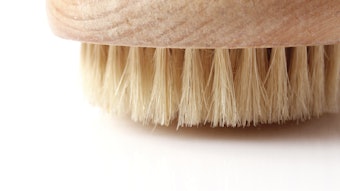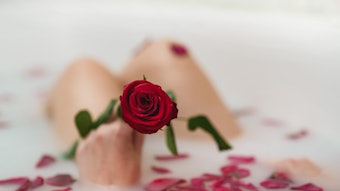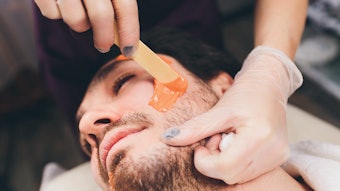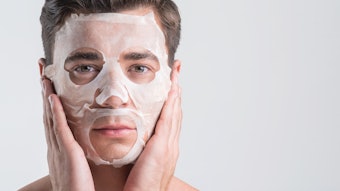Currently, the United States’ inhabitants include 78 million baby boomers—those who were born during the great population increase after World War II—and they spent $6.4 billon on anti-aging products last year.* How well you understand the needs of this market segment will determine the success of your business during the next two decades.
The holistic picture
What is the holistic approach toward aging? Most people are born with a beautiful complexion. However, what you do and how you take care of yourself and your skin will affect how you appear. When I first opened my spa in New York in 1977, one of my first editorial interviews was about holistic care—a subject that was not covered very well at that time. The skin is the largest organ of the body, and, although it normally is thought of as ending at the neck, any discussion about skin care must include the entire body. Skin serves as a barrier—it keeps out bacteria, sunlight, germs, heat, cold, dirt and gases while keeping in water, blood, minerals, vitamins, hormones and proteins. (See Main Functions of the Skin.) I always took a holistic approach toward beauty by incorporating health, wellness, and face and body care. This also includes the importance of nutrition in the anti-aging process.
Bogus buzzwords?
The skin has two main layers: the epidermis and the dermis. Without it, you could not live, yet it is abused on a daily basis by overexfoliating, overirritating with chemical and physical peels, and overexposing it to the sun. The past two decades have brought many new discoveries in the fields of cosmetics and esthetic medicine. At times, new discoveries can be rushed into without a firm understanding of the consequences and without the benefit of in-depth knowledge. Buzzwords such as “cosmeceutical,” “medical-grade” and “pharmaceutical-grade” ingredients have penetrated the professional skin care arena, causing confusion and creating misconceptions. According to the U.S. Food and Drug Administration (FDA), none of these categories are recognized legally. Products either are cosmetics or pharmaceuticals, available by prescription or over the counter. It is important to understand the facts, to share them with your clients and always to obtain information from reliable sources.
As a practicing esthetician, spa owner and product developer for three decades, owning a spa in the competitive market of New York sometimes tempts me to stray from my beliefs and give in to the latest trends, such as microdermabrasion, glycolic peels, light therapy and laser hair removal, to name just a few. But when I examine skin under a Wood’s lamp and see the damage caused by some of these treatments, I stick with what works—providing long-term benefits and lasting results. I know that many of you might disagree with this statement; however, everyone has to make a professional choice based on their own personal experience.
What’s needed
Estheticians should provide the following treatments to help rejuvenate the skin.
Gentle exfoliation. Gentle exfoliation should be offered instead of microdermabrasion, chemical peels, glycolic peels, phenol peels or laser resurfacing—all of which may result in long-term skin sensitivity and redness, and could lead to hyperpigmentation from sun exposure. Gentle exfoliation includes the use of natural substances, such as oats, rice bran, almond meal without the skin, natural buttermilk, honey and willow bark extracts. You also can add a mechanical element, such as an electric brushing machine. Also, chemical exfoliants that are less irritating may be used because they are effective in dissolving excessive buildup of dead skin cells. Options include 2% salicylic acid, kerotolytic agents and enzyme peels from green papaya.
Massage. Stress very well may be a factor in causing disease and skin-related disorders, such as psoriasis and eczema, headaches, digestive ailments, high blood pressure, poor eyesight and depression. Massage therapy offers a real solution for managing the anxiety and strain that are encountered daily. The most effective method of facial massage includes relaxing and toning the muscles in order to release the stress that causes wrinkles, lines and crow’s-feet. To achieve a therapeutic effect, knowledge of the facial muscles is required.
Hydration. The stratum corneum needs moisture in order to remain flexible, firm, translucent and effective as a barrier. As such, it is important to avoid soaps and to restore the natural moisturizing factor (NMF). NMF is the water-soluble mix of natural chemicals, such as amino acids, sodium PCA, glucose, fructose, urea, lactate, citrate formulate and inorganic salts, that retains water in healthy skin.
Protection. Increase the skin barrier with linoleic acid and gamma linoleic acid, antioxidants, polyphenols, and vitamins. Also use a cream that contains sun protection daily.
Knowledge is empowering
It’s the responsibility of estheticians to help clients achieve the best results during treatments, as well as to provide them with at-home programs. Knowledge is empowering, and understanding the true science behind the skin always will enable you to have integrity and honesty with your clientele. Join industry associations, sign up for scientific courses, attend colleges and universities, and check out online education on health science topics. Don’t get lost in the gibberish, and if you don’t understand how it works, don’t buy it. Good luck and healthy aging.










